Our mission: To explore
From designing a flame that produces less soot to measuring harmful particles in the atmosphere, McKelvey Engineering is playing a critical role in NASA's research and development
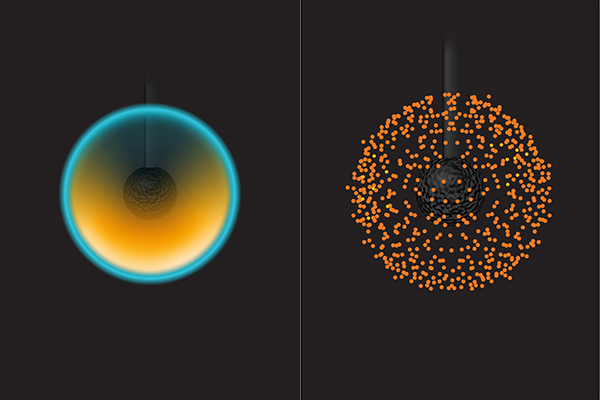
With SpaceX's launch of McKelvey School of Engineering alumnus and NASA Chief Astronaut Robert Behnken to the International Space Station May 30, another rover set to explore Mars, and creation of the U.S. Space Force, returning to space has once again become a national priority. McKelvey Engineering has been a growing part of NASA's efforts. From designing a flame that produces less soot to measuring harmful particles in the atmosphere, McKelvey Engineering is playing a critical role in NASA's research and development.
Researchers throughout Washington University in St. Louis have been instrumental in NASA's success for decades. Ray Arvidson, the James S. McDonnell Distinguished University Professor, is the deputy project scientist for NASA's Mars Exploration Rover mission and a member of the two other Mars mission science teams. A team from the Department of Physics has traveled to Antarctica for several winters on a NASA-funded mission to launch the Super Trans-Iron Galactic Element Recorder, or SuperTIGER, to measure cosmic rays.
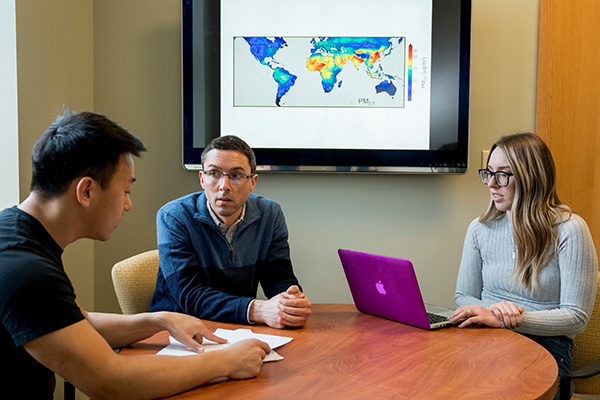
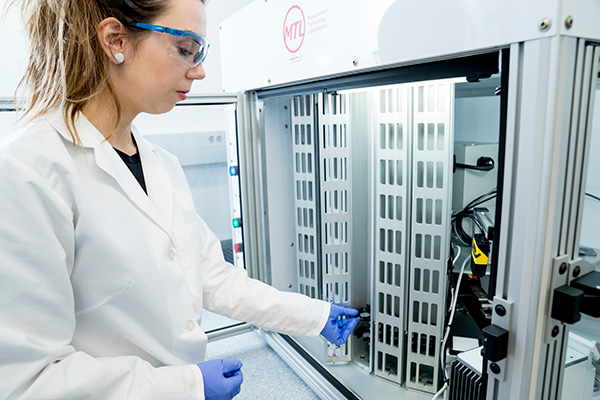
Within McKelvey Engineering, much of the research for NASA is in aerosols and atmospheric chemistry, areas in which faculty are internationally renowned for their leadership and groundbreaking discoveries.
Randall Martin, professor of energy, environmental & chemical engineering, leads several projects that provide NASA with insight into fine particulate matter, PM2.5, in the air. He is part of a large Multi-Angle Imager for Aerosols (MAIA) mission team led by NASA's Jet Propulsion Laboratory at the California Institute of Technology that is preparing to use the MAIA satellite after launch in 2022 to take observations and measurements of ground levels of PM2.5 composition around the world.
"A goal from the combination of the satellite and the ground-based measurements is to develop algorithms to enable inferring ground-level particle type everywhere the satellite observes," Martin said.
Martin has been conducting research with NASA for more than 25 years, beginning with a summer internship while an undergraduate student. A decade later, he received his first grant to conduct research for NASA while completing a postdoctoral fellowship at the Harvard-Smithsonian Center for Astrophysics. Since then, he has continued working with NASA on various projects with both immediate and long-term applicability, including as co-model scientist for a leading global atmospheric model called GEOS-Chem and a member of multiple science teams for satellite instruments.
"We're working to develop models that are used by scientists around the world, both to address current research questions and for longer-term advances," he said. "For example, some of our current research has been enabled by work that I and others did 20 years ago while pursuing my PhD. At that time, we were starting a chemical transport model, GEOS-Chem, which is now flourishing. And I'm sure that activities that we're doing today will be useful 20 years from now.
"There's a long-term benefit that accrues, and that's exciting about working with NASA," he said. "That longevity is also exciting about science in general, that what you're working on has permanence that is sustained going forward, and that's stimulating."
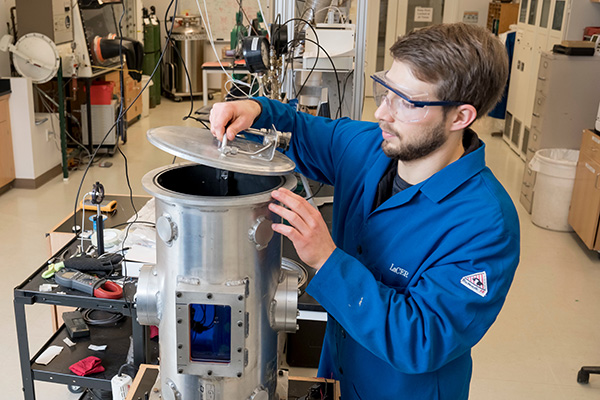

 Flame Experiment 1
Flame Experiment 1  Flame Experiment 2
Flame Experiment 2  Flame Experiment 3
Flame Experiment 3NASA has long had an influence in our daily lives by producing some common products, such as LEDs, infrared ear thermometers and portable cordless vacuums. Now, they are helping a McKelvey Engineering professor study the behavior of a simple flame.
Richard Axelbaum, the Stifel & Quinette Jens Professor of Environmental Engineering Science, is working with NASA and its International Space Station to observe flame behavior in space with a greater goal of understanding combustion and fire. The project seeks to understand how soot, a major pollutant, forms and how it can be controlled.
What he and his team have observed so far is that a candle-like flame on the Space Station is very different from a flame typically seen on Earth, which is generally yellow-orange, teardrop-shaped and sometimes emits black smoke, or soot. In space, the flame is round with large visible soot particles, all surrounded with a blue halo. The difference? Gravity.
"Gravity is important to the flame itself and to the generation of particles within the flame," Axelbaum said. "Our goal is to understand the process of particle formation in flames so we can control and, if necessary, eliminate it."
Jian Wang, professor of energy, environmental & chemical engineering, spent 16 years at the U.S. Department of Energy's Brookhaven National Laboratory studying the ways in which aerosol particles affect clouds and how clouds affect aerosols. He and his lab have developed a novel instrument that is placed onboard aircraft to study how interactions between aerosols and clouds affect hydrological cycles.
"Our instrument measures the size of particles and how they add to the concentration of different-sized particles, because the particle size can determine how efficiently they influence climate," Wang said. "For example, particles reflect sunlight. This influences the energy budget of the earth because most of the energy is coming from the sun. If you have particles that reflect the sunlight back to space more efficiently than the earth's surface, it cools the climate, so it is very important that we know how many particles are in the air."
In the blink of an eye, Wang's instrument draws in particles from the air, sorts them by size, and takes video to quantify particle size and numbers. A traditional instrument takes a full minute to do the same.
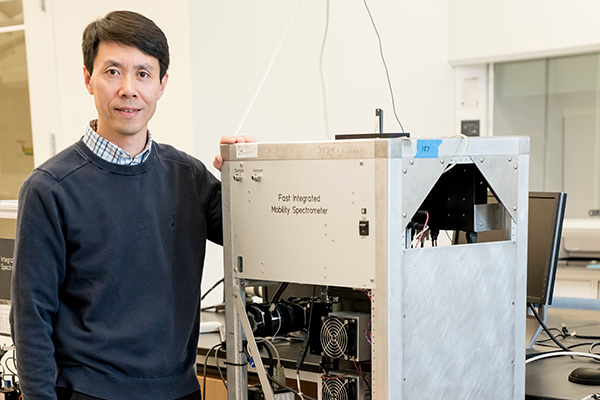

"The faster we can do the measurements, the better we know how particles change with space and time," he says. "This is what makes our instrument very unique. We are the only group in the world who can do this."
Other faculty are doing or have done research with NASA in the past decade. Patricia Weisensee and Fuzhong Zhang each received NASA's three-year, $600,000 early-career award. Weisensee, assistant professor of mechanical engineering & materials science, received the award in fall 2019 to develop a liquid-metal-based heat switch that automatically turns on or off based on the external temperature. The switch could be used in electronic components of a spacecraft, which generate a tremendous amount of heat.
Zhang, the Francis Ahmann Career Development Associate Professor in energy, environmental & chemical engineering, received the award in 2015, with which he developed biosynthetic silk threads that perform as well as natural spider silk and could be used to replace petroleum-based synthetic fibers in future space missions.
Rajan Chakrabarty, assistant professor of energy, environmental & chemical engineering, used funding from NASA to study the environmental impact of cookstove emissions in India, where millions of households burn crop chaff or dung to prepare food each day. More than twice the emission levels were detected in samples from central India than in previous studies.
Ramesh Agarwal, the William Palm Professor of Engineering and professor of mechanical engineering & materials science, previously worked at NASA Ames Research Center. He is among a group of collaborators from Missouri University of Science & Technology and Lincoln University developing new turbulence models for aircraft and aerospace vehicles with a NASA grant.
University-NASA partnership
Axelbaum said research universities and NASA share a unique goal.
“The university mission is, to some extent, to explore as well. We're not building something to sell, but are trying to understand and explore things that weren't known before, so they're very complementary missions.”
"The whole mission of NASA is to explore – to boldly go where no man has gone before," he said. "The university mission is, to some extent, to explore as well. We're not building something to sell, but are trying to understand and explore things that weren't known before, so they're very complementary missions."
Wang and Martin said university research complements the work that NASA does in its various research facilities nationwide.
"At the National Lab, we focused on really big projects that would be hard for a university to manage and is a different type of research," Wang said. "The university is more nimble because it has more individual investigators who work with students and can change research direction very quickly in response to new discoveries, and even pursue new directions."
"NASA has overall objectives for advancing scientific understanding through satellite observations and through technology development, and they directly undertake the central component of that objective," Martin said. "Academia contributes by always questioning, especially with new students who are coming in with different perspectives, challenging assumptions, and trying to understand what they see. It's definitely a partnership."
Students
Those different perspectives held by both undergraduate and graduate students can lead to new instruments, new apps and new insight into a future career.
Ben Sumlin, a doctoral student in Chakrabarty's lab, was one of only 54 students to win a prestigious three-year NASA Earth & Space Science Fellowship in 2018. He is building and deploying a state-of-the-art photoacoustic instrument for NASA's Fire Influence on Regional to Global Environments Experiment - Air Quality study.



Five Engineering students have spent at least one summer working as interns at various NASA facilities nationwide: Emme Wiederhold, a senior majoring in computer science with minors in architecture and in design, will join NASA's Jet Propulsion Laboratory full-time this year. Jonathan Richter, a junior majoring in mechanical engineering with a minor in aerospace, worked at NASA Armstrong Flight Research Center; Zarya DeSouza, a junior majoring in mechanical engineering, worked at NASA Ames Research Center; Anton Salem, a senior majoring in systems science & engineering, worked at NASA John H. Glenn Research Center; and Nathan Shreve, a junior majoring in electrical engineering with minors in computer science and managerial economics, worked at NASA Goddard Space Flight Center.
Ultimately, faculty and students have the same goal as NASA's scientists.
"We all want to do great science," Wang said. "If our instrument can have an application that contributes or helps lead to discoveries, we are happy to be a part of it."
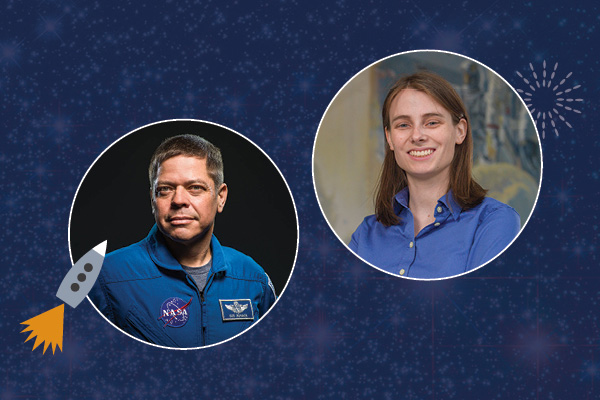
Alumni @ work
St. Louis native and McKelvey Engineering alumnus Robert Behnken (left) and his crewmate, Doug Hurley, successfully launched the Demo-2 flight of SpaceX's CrewDragon spacecraft, the first commercially built and operated U.S. spacecraft to transport humans into space, May 30, 2020. The two NASA astronauts worked with SpaceX to develop their new spacecraft systems, which transported crew to and from the International Space Station (ISS). After the first attempt at a launch was scrubbed due to weather, Behnken and Hurley arrived at the space station May 31.
Behnken is the joint operations commander for the Demo-2 mission and is responsible for activities such as rendezvous, docking and undocking, as well as Demo-2 activities while the spacecraft is docked to the space station.
Behnken, who earned bachelor's degrees in physics and in mechanical engineering in 1992, both from the School of Engineering, is a flight test engineer, a colonel in the Air Force and joined the astronaut corps in 2000. He earned a master's and a doctorate from the California Institute of Technology. He flew aboard space shuttle Endeavour twice, during which he performed six spacewalks totaling more than 37 hours and more than 708 hours in space.
Katie Burlingame (right), who earned a bachelor's in mechanical engineering and a master's degree in biomedical engineering from McKelvey Engineering in 2012, is a flight controller and instructor at NASA's Johnson Space Center in Houston as support for the ISS. She and her group are responsible for the environmental and thermal controls on the space station, such as keeping water and air clean, responding to emergencies and regenerating waste products.
"We recycle sweat and urine into clean water, then use the clean water to generate oxygen." Burlingame said. "We like to say we use yesterday's coffee to make tomorrow's coffee."
As a contractor for Cimarron, Burlingame also does shifts on console in the Mission Control Center, where they operate the environmental control equipment on the space station. In addition, she helps to train new astronauts on space station systems, including crews assigned to space station missions.
When Burlingame was a senior at WashU, she was awarded a $10,000 scholarship from the Astronaut Scholarship Foundation. Starting her first year at WashU, she began working to build nanosatellites in the Aerospace Systems Lab. She was an Alexander S. Langsdorf Fellow, a McKelvey Undergraduate Research Scholar and a NASA MUST scholar, through which she did summer internships at NASA that solidified her interest.
“When you come here to work, you go through a lot of classes to learn the skills for the technical items, almost like getting a master’s degree. You have to know how to think like an engineer, have a basis to solve problems, communicate well, and work on teams, and the opportunities I had during college were helpful to lay that foundation for that.”
"The activities that I did outside of classes and team projects that allowed me to work on engineering projects, work on creative solutions and work on integrating different people and systems and solving problems are things that transfer over to what I do now," Burlingame said.
Back to Engineering Momentum